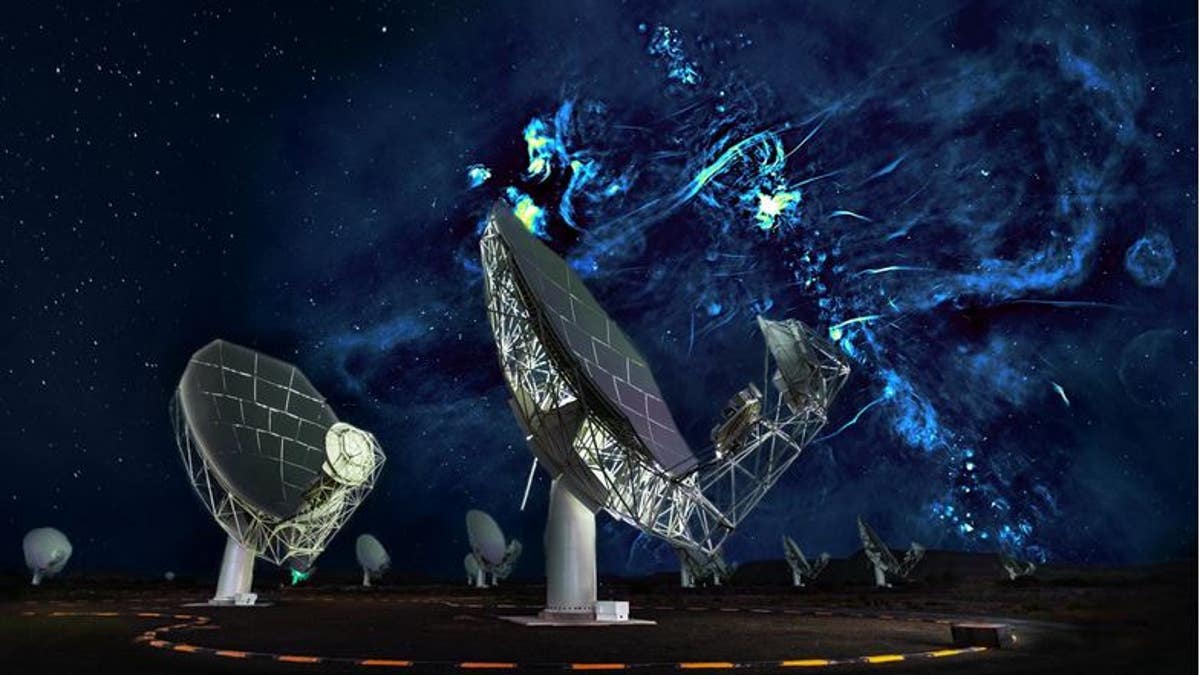Fox News Flash top headlines for Sept. 11
Fox News Flash top headlines for Sept. 11 are here. Check out what's clicking on Foxnews.com
A pair of radio-emitting bubbles that tower hundreds of light-years above and below our galaxy were discovered by an international team of astronomers.
The hourglass-shaped feature is likely the result of an energetic burst near the Milky Way's supermassive black hole a few million years ago, according to scientists.
"The center of our galaxy is relatively calm when compared to other galaxies with very active central black holes," said Ian Heywood of the University of Oxford and lead author of an article appearing in the journal Nature.
"Even so, the Milky Way's central black hole can, from time to time, become uncharacteristically active, flaring up as it periodically devours massive clumps of dust and gas," he explained in a statement. "It's possible that one such feeding frenzy triggered powerful outbursts that inflated this previously unseen feature."
AMAZON SEES MORE THAN 100,000 FIRES, CAUSING SPIKE IN AIR POLLUTION

Radio image of the central portions of the Milky Way galaxy. The plane of the galaxy is marked by a series of bright features, exploded stars and regions where new stars are being born, and runs horizontally through the image. (Oxford, SARAO)
Heywood and his colleagues used the South African Radio Astronomy Observatory (SARAO) MeerKAT telescope to map out broad regions in the center of the galaxy -- even conducting observations at wavelengths near 23 centimeters. Upon examining the very similar features of the twin bubbles, researchers believe they've found evidence that they were formed from a violent eruption that quickly punched through the interstellar medium in opposite directions.
"The shape and symmetry of what we have observed strongly suggests that a staggeringly powerful event happened a few million years ago very near our galaxy's central black hole," William Cotton, an astronomer with the National Radio Astronomy Observatory in Charlottesville, Virginia, and co-author on the paper, said in a press statement.
WATER DETECTED ON POTENTIALLY HABITABLE EXOPLANET FOR THE FIRST TIME, SCIENTISTS SAY
"This eruption was possibly triggered by vast amounts of interstellar gas falling in on the black hole, or a massive burst of star formation which sent shockwaves careening through the galactic center. In effect, this inflated bubbles in the hot, ionized gas near the galactic center, energizing it and generating radio waves that we could eventually detect here on Earth," Cotton said.

Radio image of the center of the Milky Way with a portion of the MeerKAT telescope array in the foreground. (Oxford, SARAO)





















